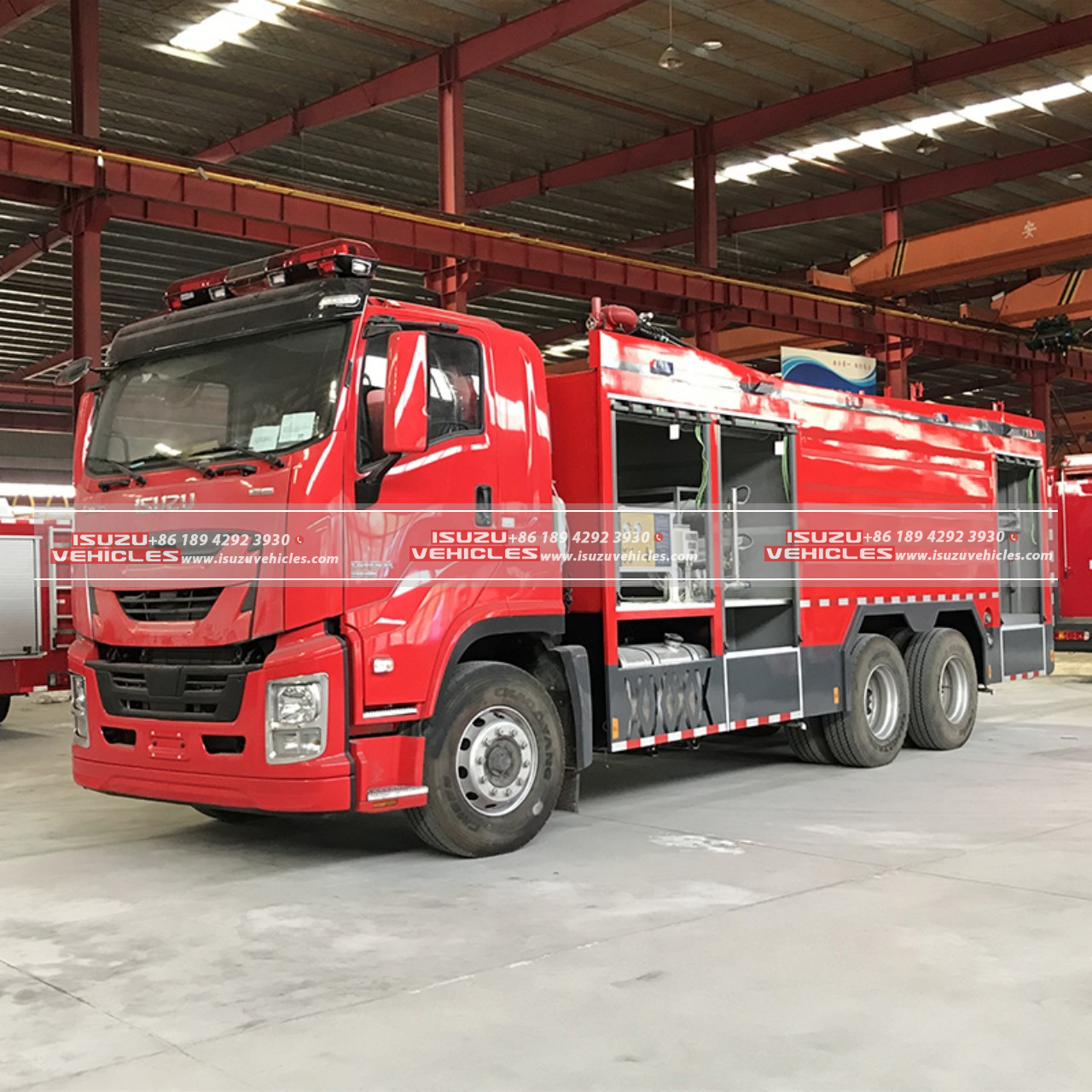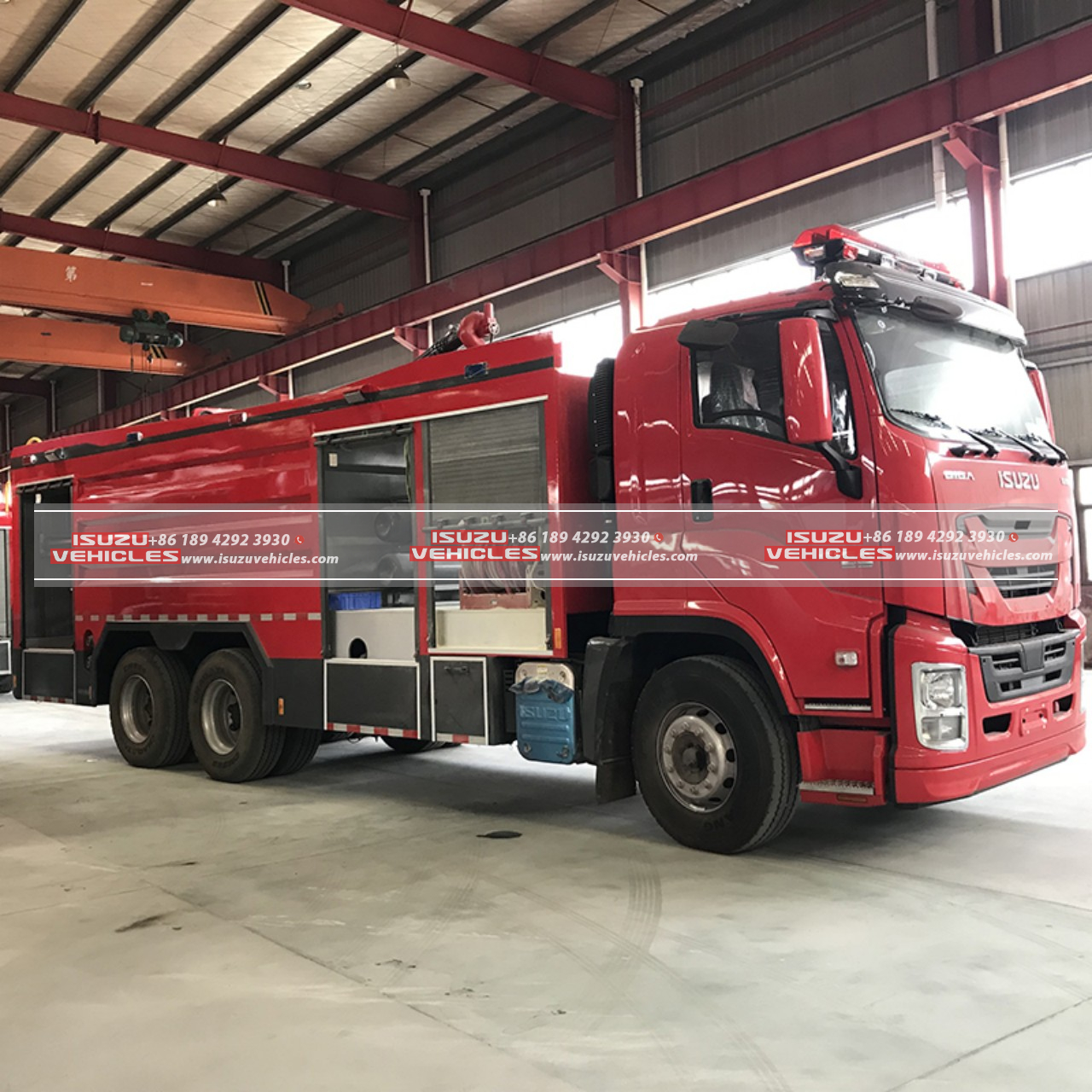Fire trucks play a critical role in emergency response, and their reliability can be the difference between life and death in critical situations. ISUZU fire trucks, known for their robust performance and durability, are widely used in firefighting operations around the world. From the ISUZU GIGA to the ISUZU ELF models, these trucks are designed to perform in extreme conditions. However, to ensure they function optimally, regular maintenance is key.
Proper care and maintenance help prevent breakdowns, extend the truck’s lifespan, and ensure it’s always ready for emergencies. Below, we explore the essential maintenance practices that keep ISUZU fire trucks in top shape.
Routine Engine Maintenance
The engine is the heart of any vehicle, and ISUZU fire trucks are no exception. The ISUZU GIGA and ISUZU ELF trucks are equipped with powerful engines, capable of delivering the torque and power needed to carry heavy firefighting equipment and navigate through tough terrains. Regular engine checks ensure that the truck performs reliably when it’s needed most.
1. Oil Changes
Regular oil changes are vital for maintaining engine performance in ISUZU fire trucks. Over time, engine oil loses its ability to lubricate, leading to increased friction between the engine’s moving parts. For ISUZU GIGA fire trucks, it’s recommended to change the oil every 10,000 to 15,000 kilometers, or as directed by the manufacturer. Use high-quality synthetic oil suited to heavy-duty engines for better protection.
Check the oil level before and after each shift to ensure proper lubrication. Low oil levels can lead to overheating and engine damage, both of which are costly to repair and could take the fire truck out of service during critical moments.
2. Coolant System Maintenance
The coolant system regulates engine temperature and prevents overheating, which is especially important when fire trucks are exposed to intense heat. Ensure that the coolant levels are within the recommended range, and top up with the appropriate mixture of water and antifreeze when necessary.
Additionally, inspect the radiator for any leaks, blockages, or damage that could affect cooling efficiency. ISUZU ELF fire trucks operating in harsh environments may require more frequent coolant system checks, as dust and debris can accumulate in the radiator.
3. Air Filter Inspection
Fire trucks often operate in dusty, smoke-filled environments. This makes air filter maintenance critical for optimal engine performance. A clogged air filter reduces airflow to the engine, causing reduced efficiency and higher fuel consumption. Clean or replace the air filter regularly to ensure your ISUZU fire truck operates at its peak performance.

Brake System Checks
The brake system is one of the most critical safety components in ISUZU fire trucks. Given their large size and weight, fire trucks require highly responsive brakes to stop safely and effectively, especially in emergency situations where rapid deceleration is necessary.
1. Brake Fluid Levels
Always monitor brake fluid levels. Low levels can result in a spongy brake pedal or complete brake failure. Brake fluid absorbs moisture over time, which can reduce its effectiveness. It is recommended to replace brake fluid every two years or according to the manufacturer’s service intervals.
2. Brake Pad and Rotor Inspection
ISUZU fire trucks are heavy vehicles that put a lot of stress on their braking systems. Regularly check brake pads for wear and tear, and replace them when they reach the manufacturer’s recommended thickness. Additionally, inspect the brake rotors for any signs of warping or excessive wear. These components ensure that the truck can come to a stop quickly and safely, even when carrying heavy firefighting equipment.
Tire Maintenance
Given the weight and operational demands placed on fire trucks, proper tire maintenance is crucial. Tires are responsible for the truck’s traction and stability, which are essential when navigating through hazardous or uneven terrain.
1. Tire Pressure Checks
Maintaining the correct tire pressure is key to the performance of your ISUZU fire truck. Under-inflated tires lead to poor fuel efficiency, increased wear, and the risk of blowouts. On the other hand, over-inflated tires reduce traction and can cause uneven tire wear. Check tire pressure regularly, especially before and after responding to emergencies. Always refer to the truck’s manual for the correct pressure values.
2. Tire Tread Inspection
Tire treads provide grip, which is essential when driving on slippery or uneven surfaces. Inspect the tread depth regularly to ensure that the tires have enough grip for safe operation. Replace any tires that show signs of significant wear or damage, as worn-out tires can compromise the fire truck’s handling, particularly when carrying heavy loads.
3. Alignment and Balancing
Regular alignment and tire balancing are essential to prevent uneven tire wear and to ensure smooth handling of the fire truck. Poor alignment can lead to handling problems, which is especially dangerous when driving at high speeds or in emergency situations.

Electrical System Maintenance
Fire trucks are equipped with complex electrical systems that power essential components such as emergency lights, sirens, radios, and firefighting equipment. A malfunction in the electrical system can result in serious operational issues.
1. Battery Maintenance
The battery is the backbone of the fire truck’s electrical system. Regularly check the battery terminals for corrosion, as this can interfere with electrical connectivity. Clean the terminals with a wire brush when necessary and ensure the battery is securely fastened.
Additionally, test the battery’s charge regularly to avoid a dead battery during emergency operations. For ISUZU GIGA and ISUZU ELF fire trucks, replacing the battery every three to five years, or as recommended by the manufacturer, can help avoid unexpected electrical failures.
2. Lighting Systems
The lights on ISUZU fire trucks are critical for visibility during emergency responses, especially at night or in low-visibility conditions. Check that all headlights, taillights, emergency lights, and spotlights are functioning properly. Replace any burnt-out bulbs immediately, and ensure the wiring is intact.
Hydraulic System Maintenance
The hydraulic systems in ISUZU fire trucks control various firefighting components, such as the ladder, hoses, and water pumps. Proper maintenance of the hydraulic system is vital for smooth operation.
1. Hydraulic Fluid Levels
Just as engine oil is critical for the engine, hydraulic fluid is essential for the proper operation of the truck’s firefighting tools. Low or contaminated hydraulic fluid can lead to sluggish or unresponsive equipment. Check the fluid levels regularly, and ensure that the hydraulic fluid is clean and free from contaminants. Replace it according to the manufacturer’s guidelines to maintain peak performance.
2. Hydraulic Hoses and Fittings
Inspect all hydraulic hoses and fittings for signs of wear, leaks, or damage. Even minor leaks in hydraulic systems can result in significant performance issues during firefighting operations. If any hoses or fittings show signs of damage, replace them immediately to prevent further issues.
Pump and Water System Maintenance
The water pump is arguably the most important component of a fire truck, as it enables the delivery of water during firefighting operations. Regular maintenance of the pump and water system ensures that the fire truck can function efficiently in emergency situations.
1. Pump Operation Checks
Perform regular checks on the water pump’s operation. Run the pump during routine maintenance inspections to ensure it delivers water efficiently and without delay. Listen for unusual noises, such as knocking or whining, which could indicate a mechanical problem with the pump.
2. Hose Inspections
Fire hoses should be inspected regularly for leaks, cracks, or other damage. A damaged hose can seriously hinder firefighting efforts, and in extreme cases, may render the truck’s water supply ineffective. Ensure all hoses are properly stored and coiled to prevent kinks or wear, and replace any that show signs of wear.
Drivetrain and Suspension Maintenance
The drivetrain and suspension system of ISUZU fire trucks are essential for carrying the truck’s weight and providing stability during emergency responses. Regular inspections and maintenance help ensure smooth handling and optimal performance.
1. Driveshaft and Differential Maintenance
The driveshaft and differential work together to transfer power from the engine to the wheels. Regularly check the driveshaft for any signs of wear, such as vibrations or unusual noises during operation. Similarly, inspect the differential for any leaks or worn gears, and ensure the lubricant is topped up as needed.
2. Suspension System Inspection
Fire trucks, particularly heavy models like the ISUZU GIGA, place a lot of strain on their suspension systems. Regularly check the suspension components, including shock absorbers, springs, and bushings, for signs of wear. A well-maintained suspension system ensures the truck can handle heavy loads and navigate uneven terrain without issues.
